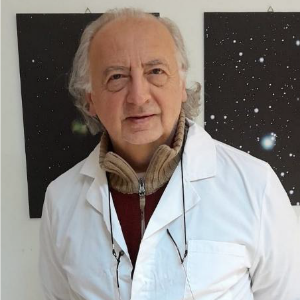Title : Results of a photobiomodulation treatment in patients with macular degeneration age-related (ADM) with a new low-fluence, multifrequency wearable device: Positive medium-term effects (6 months) of visual function
Abstract:
Introduction: In our previous study, we demonstrated the efficacy and short-term safety of low-fluence photobiomodulation (LF-PBM) for atrophic macular degeneration (AMD) using a newly developed wearable multifrequency device. In this study, we report the six-month follow-up results obtained with the same device.
Aim: To assess visual function in patients with AMD receiving LF-PBM delivered through a wearable device over six months of maintenance therapy.
Materials and methods: In this single-blind, placebo-controlled study, we prospectively enrolled patients with AMD (Early, Intermediate, Late-Non Neovascular) according to the classification AREDS. Treatment group underwent an induction phase of 10 sessions, each lasting 12 minutes and administered every 15 days, followed by a maintenance phase of three weekly 12-minute sessions over six months. Treatment was delivered using a photobiomodulation device equipped with three low-fluence LEDs emitting at 605, 630, and 660 nm. The placebo group underwent the same number of sessions with an inactive device. The following parameters were assessed: best-corrected visual acuity (BCVA) at 4 m using Early Treatment Diabetic Retinopathy Study (ETDRS) charts at baseline (T0) and after six months (T2), microperimetry (MP) at T0, after one month (T1), and at T2 and Optical Coherence Tomography (OCT) at T0 and at T2. All statistical analyses were performed using PRISM 10
Results: A total of 45 patients—21 female—with a mean age of 78 (±10) years, accounting for 67 eyes, were enrolled. Of these, 41 eyes were assigned to treatment group. At T2, MP values were significantly different between the placebo group [15 ± 5.6 dB] and the treated group [19 (13–23) dB; p = 0.0405]. Within the treated group alone, MP improved significantly from 17 (12–21) dB at T0 to 19 (13–23) dB at T2 (p < 0.0001). BCVA also improved significantly over six months, from 0.4 (0.3-0.6) to 0.3 (0.2-0.4) logMAR (p-value<0.0001) and compared to placebo (p = 0.0303). Conversely, no differences were detected in OCT
measurements at both T0 and T2 between treated and placebo groups. No sides effects were reported in treated group.
Conclusions: Stimulation in the red band of the electromagnetic spectrum (600–660 nm) interacts with retinal mitochondria—particularly cytochrome c-oxidase—to reduce oxidative stress, support retinal cell repair, and thus enhance cell efficiency and survival. Over a six-month follow-up, LF-PBM significantly improved visual function without any reported side effects or OCT alterations. These benefits are likely attributable to decreased ROS levels and reduction of “inflammaging”. Our MD proved to be easy to use, without side effects and the adherence to the therapy was optimal.




